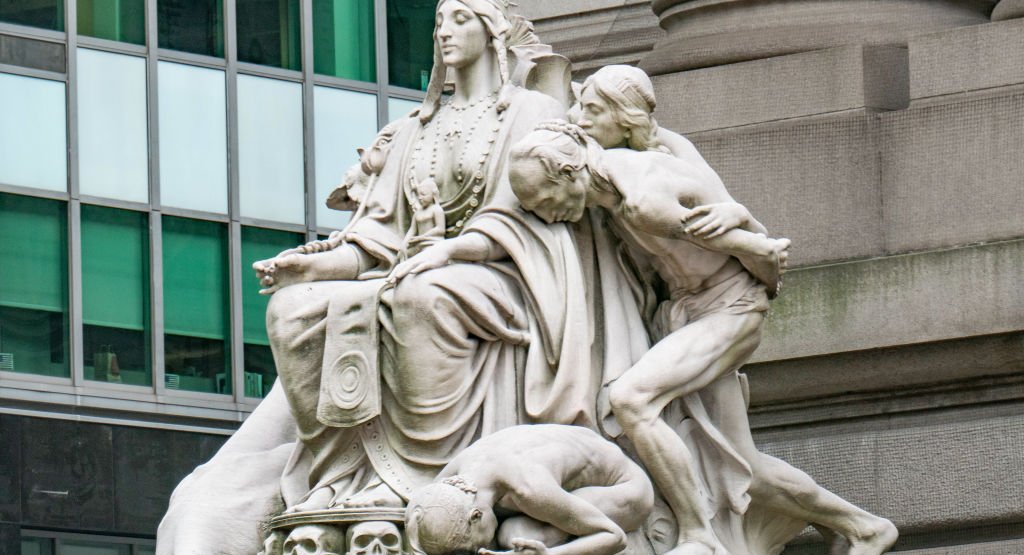Historians contend that Dutch settlers began the process of establishing New Amsterdam, the town that would eventually become New York City, at some point in 1624.
Dutch government officials joined city officials and others on Wednesday to commemorate that moment and begin a process for facing the history that followed – the transatlantic slave trade and the dispossession of indigenous people from the island of Manhattan.
The launch event for what is called Future 400 was held at the National Museum of the American Indian. It begins two years of Dutch government-funded exhibitions, theater productions and dances marking colonial history and the partnership between the United States and the Netherlands.
“We cannot change the past but we can face up to it,” Birgitta Tazelaar, the Dutch ambassador to the United States, said at the event.
The kickoff follows a historic speech in 2022 by Dutch Prime Minister Mark Rutte on the Netherlands’ role in the history of slavery. Rutte noted that over 600,000 enslaved Africans had been shipped to the American continent “in deplorable conditions” by 1814.
“Today, on behalf of the Dutch government, I apologize for the past actions of the Dutch state: to enslaved people in the past, everywhere in the world, who suffered as a consequence of those actions, as well as to their daughters and sons, and to all their descendants, up to the present day,” Rutte said.
The various events will take place across some of the city’s pre-eminent cultural and historical institutions, including the Schomburg Center, the Museum of the City of New York, Photoville, the Joyce Theater and Tribeca Film Festival.
Russell Shorto, author of “The Island at the Center of the World: The Epic Story of Dutch Manhattan and the Forgotten Colony That Shaped America,” curated one of the exhibitions, “New York Before New York,” which will run at the New-York Historical Society through July 14.
“There was this multiethnic colony that was founded, which became New York,” Shorto said in an interview prior to the launch event. “But at the same time, they introduced slavery, and they dispossessed Native Americans.”
Shorto said the process of uncovering that complex history led to revelations regarding the contested history of Manhattan’s founding.
This included the original copy of a 1626 letter in the Dutch National Archives by Peter Schagen, a representative of the Dutch West India Company. Schagen had not participated in the supposed sale of Manhattan by Lenape natives to the Dutch but recounted in correspondence that it had occurred.
“And this is the proof that the Dutch ‘bought’ the island from the native people,” Shorto said.
A leader of New York City’s Lenape community who was not part of the historical review dismissed that claim.
“Mr. Shorto’s claim that the letter of Peter Schagen of a purchase does not hold up in any court – Lenape customary law, New York state law, U.S. federal law, and international law,” Joe Baker, the executive director of the Lenape Center, said in an email. He added that he had not been consulted on the Future 400 series.
“Manhattan can neither be sold nor purchased,” Baker said, arguing it was “stolen.”
Baker called the purchase claim a “malicious tactic of skewing fact to fit the colonizer’s narrative to justify what they have done.”
The events related to Future 400 include discussions among Indigenous leaders, including Lunaapeew/Lenape Celebration Weekend, scheduled for May 4 and 5 at the Museum of the City of New York.
Additionally, “Slavery and the Slave Trade in New Netherland and the Dutch Atlantic World” will take place on May 3 and 4 at the Schomburg Center and the New-York Historical Society.





